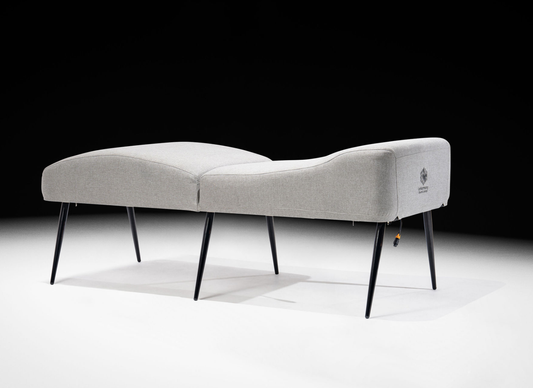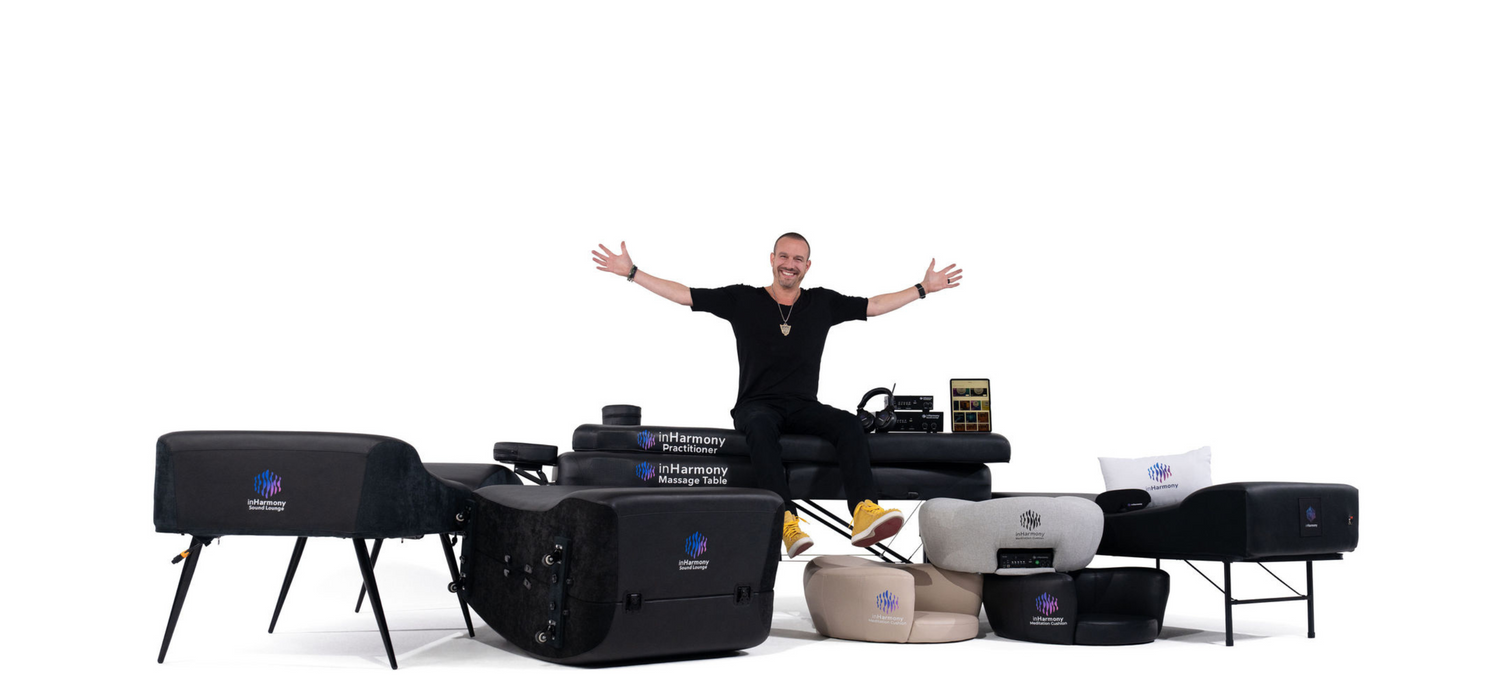Sound Therapy for Addiction: A Guide to Recovery
Addiction can be a painful and isolating experience. Whether it's substance abuse, gambling, or other compulsive behaviors, addiction can take hold of our lives and refuse to let go.
But what if there's a powerful and transformative therapy that can help you break free from the grip of addiction?
Sound therapy is slowly gaining popularity as a holistic approach to addiction treatment and for good reason. In this article, we'll explore how sound therapy works and how it can help you on your journey to recovery.
What is Sound Therapy?
Sound therapy is a form of alternative medicine that uses sound waves to promote healing and well-being. It can be applied in various ways, such as listening to music, singing, chanting, playing instruments, or using devices that produce specific frequencies and vibrations.
This form of therapy is based on the idea that everything in the universe has a natural frequency or vibration and that by tuning into these frequencies, you can harmonize your body, mind, and spirit. This, in turn, helps those struggling with various forms of addiction to recover faster.
Sound therapy can also benefit a wide range of conditions, such as anxiety, depression, insomnia, chronic pain, migraines, tinnitus, autism, dementia, and more.
How Sound Therapy can help Tackle Addiction
Sound therapy can be used as a complementary treatment for addiction recovery, along with other therapies such as counseling, medication, support groups, and lifestyle changes. Here are some key ways sound therapy can help people in recovery:
Reducing Stress
Stress is a major factor that can trigger cravings and relapse. Sound therapy can help lower stress levels by activating the parasympathetic nervous system, which is responsible for relaxation and healing. Sound therapy can also increase the production of endorphins, natural painkillers, and mood boosters.
Improving Mood
Many people who struggle with addiction suffer from depression, anxiety, or other mood disorders. Sound therapy can help improve mood by stimulating the release of dopamine and serotonin, which are neurotransmitters that regulate happiness and well-being.
Sound therapy can also help balance the brain waves and harmonize the left and right hemispheres of the brain, which can enhance cognitive function and creativity.
Enhancing Sleep Quality
Sleep is essential for physical and mental health, especially for people who are recovering from addiction. Lack of sleep can impair the immune system, increase inflammation, impair memory and concentration, and worsen mood disorders.
Sound therapy can help improve sleep quality by inducing a state of deep relaxation and calmness. It can also help regulate the circadian rhythm, which is the natural cycle of sleeping and waking.
Promoting Relaxation
Relaxation helps people cope with the challenges of addiction recovery. It can help reduce physical tension, emotional distress, and negative thoughts. Sound therapy can help promote relaxation by creating a soothing and peaceful environment that allows you to focus on the present moment and let go of worries and fears.
Ways Sound Therapy is Administered
When it comes to sound therapy, there are a variety of techniques and instruments that can be used to promote relaxation, healing, and overall well-being. Here are some of the most common ways sound therapy is administered:
Tuning Forks
Tuning forks are small, metal instruments that produce a specific sound frequency when struck. They can be placed on or near the body to promote healing and relaxation. Some practitioners use tuning forks to stimulate specific acupuncture points or chakras, while others use them to promote overall balance and well-being.
Singing Bowls
Singing bowls are metal or crystal bowls that are struck or played with a mallet to produce a deep, resonant sound. They are often used in meditation and relaxation practices. The vibrations from the singing bowl are believed to promote healing and balance in the body.
Gong Therapy
Gong therapy involves the use of large, metal gongs that are struck to produce a deep, reverberating sound. The sound waves are believed to stimulate the body's natural healing processes and promote relaxation. Gong therapy can be a powerful way to release tension and promote a deep sense of peace.
Music Therapy
Music therapy involves the use of music to promote physical, emotional, and mental well-being. It can include listening to music, singing, or playing an instrument. Music therapy is often used to promote relaxation, reduce anxiety and depression, and improve overall mood.
Vibroacoustic Therapy
Vibroacoustic therapy uses low-frequency sound waves to produce a massage-like effect on the body, promoting relaxation and healing. This therapy could be administered through a meditation cushion or a sound bed that vibrates in response to sound waves played through speakers or headphones.
Binaural Beats
Binaural beats involve the use of headphones to play two different sound frequencies in each ear, producing a perceived third frequency in the brain. This can promote relaxation, focus, and sleep. Binaural beats are often used as a form of meditation or to aid in falling asleep.
Nature Sounds
Nature sounds, such as ocean waves or bird songs, are often used in sound therapy to promote relaxation and reduce stress. The calming sounds of nature can help to create a peaceful environment for relaxation and healing.
Vibroacoustic Therapy: Promising Results for Addiction Recovery
While there is no single "cure" for addiction, complementary therapies like sound therapy may help support addiction recovery. One sound therapy technique that has shown promise in this area is vibroacoustic therapy.
Vibroacoustic therapy uses low-frequency sound waves to produce a massage-like effect on the body, promoting relaxation and healing. By stimulating the body's natural relaxation response, vibroacoustic therapy can help reduce stress and anxiety, which can be major triggers for addictive behaviors.
It's important to note that vibroacoustic therapy should not be used as a substitute for evidence-based addiction treatment, such as counseling and medication-assisted treatment. However, these studies suggest that vibroacoustic therapy may be a promising complementary therapy for addiction recovery.
How To Get Started With Vibroacoustic Therapy
If you're interested in exploring vibroacoustic therapy as a tool for addiction recovery, getting started is easier than you might think. Here are a few steps to help you begin your journey:
1. Do Your Research
Learn as much as you can about vibroacoustic therapy and its potential benefits for addiction recovery. Look for reputable sources of information, such as scientific studies, books, and articles written by experts in the field. You can as well check out our library of content on inharmony’s blog to learn more about vibroacoustic therapy.
2. Find a Qualified Practitioner
Look for a sound therapist or vibroacoustic practitioner who has experience working with addiction recovery. They should have the knowledge and skills to create a treatment plan that's tailored to your needs and goals.
3. Consider Your Options
There are a variety of tools and equipment available for vibroacoustic therapy, including sound lounges, cushions, and chairs. Think about which option might be best for you and your situation.
4. Make an Appointment
Once you've found a qualified practitioner and decided on a therapy tool, schedule an appointment to begin your treatment. Be sure to ask any questions you may have and communicate your needs and preferences to your therapist.
Remember, you don't necessarily have to visit a clinic or spa to experience the benefits of vibroacoustic therapy. With the right equipment, you can enjoy this powerful therapy in the comfort of your own home. For example, our meditation cushion and sound lounge are both excellent options for anyone interested in vibroacoustic therapy.
Takeaway
Sound therapy is a safe and natural way to support recovery from addiction. By using sound waves to stimulate the brain and body, sound therapy, especially vibroacoustic therapy can help reduce stress, improve mood, enhance sleep quality, and promote relaxation.
If you or a loved one is struggling with addiction, it's important to seek help from a qualified healthcare professional. Sound therapy for addiction, including vibroacoustic therapy, may be one tool that can be used to support your recovery journey.












